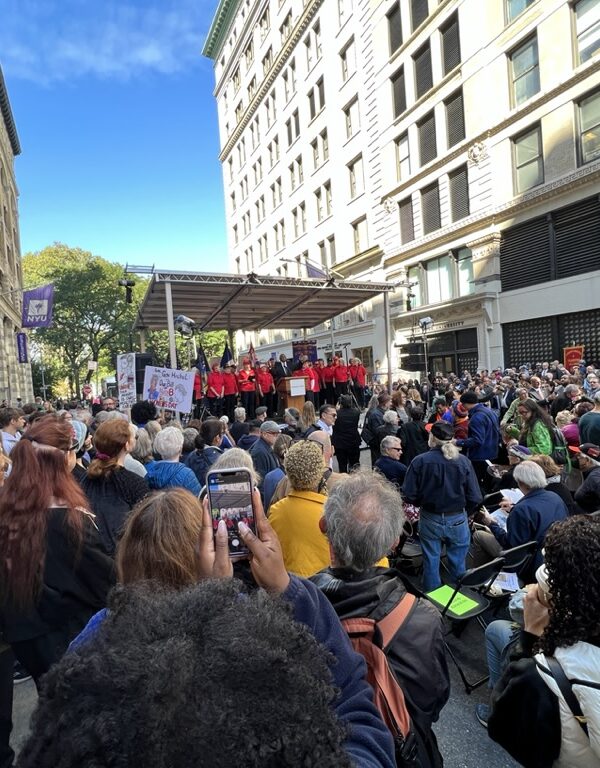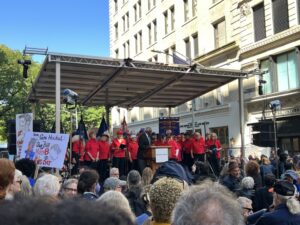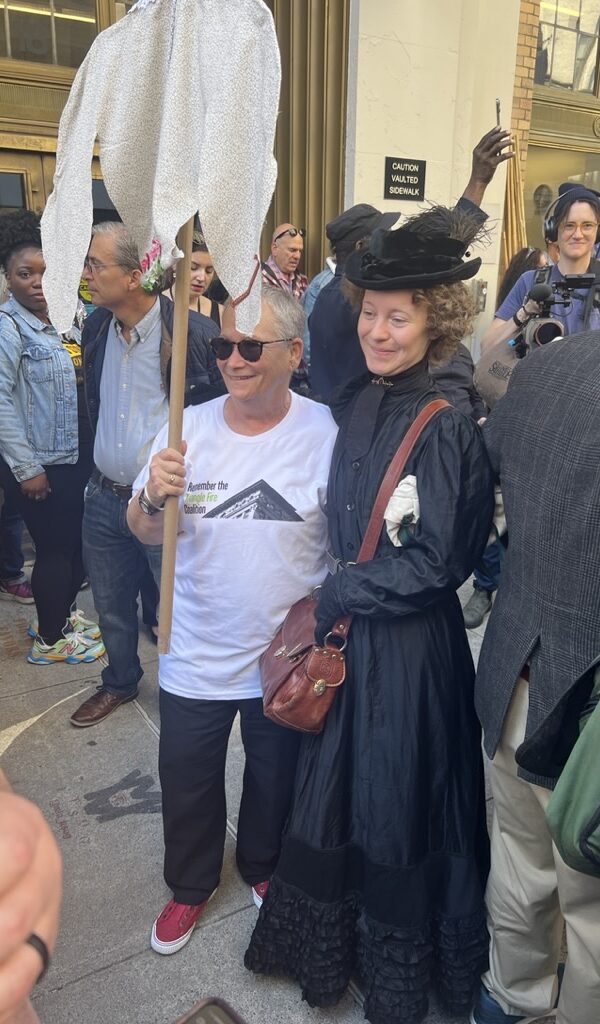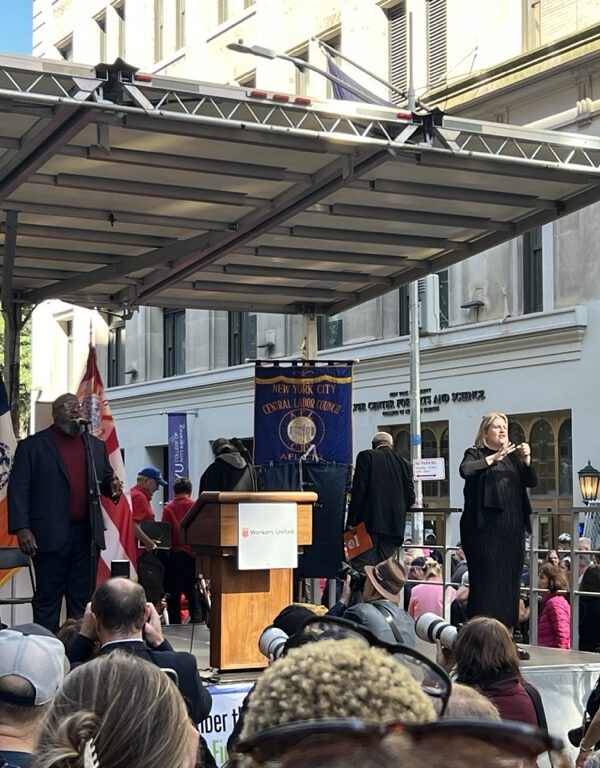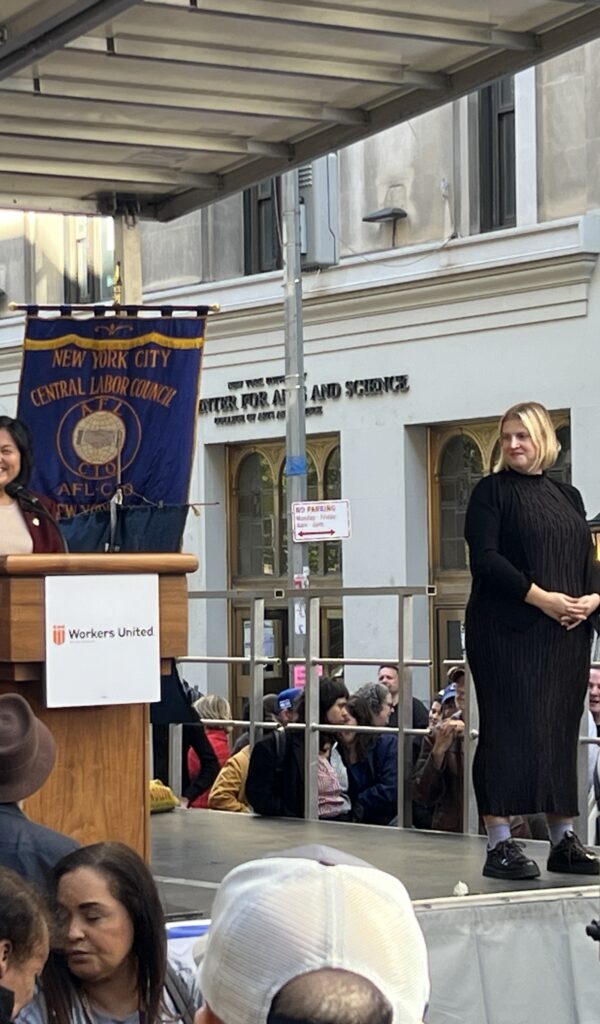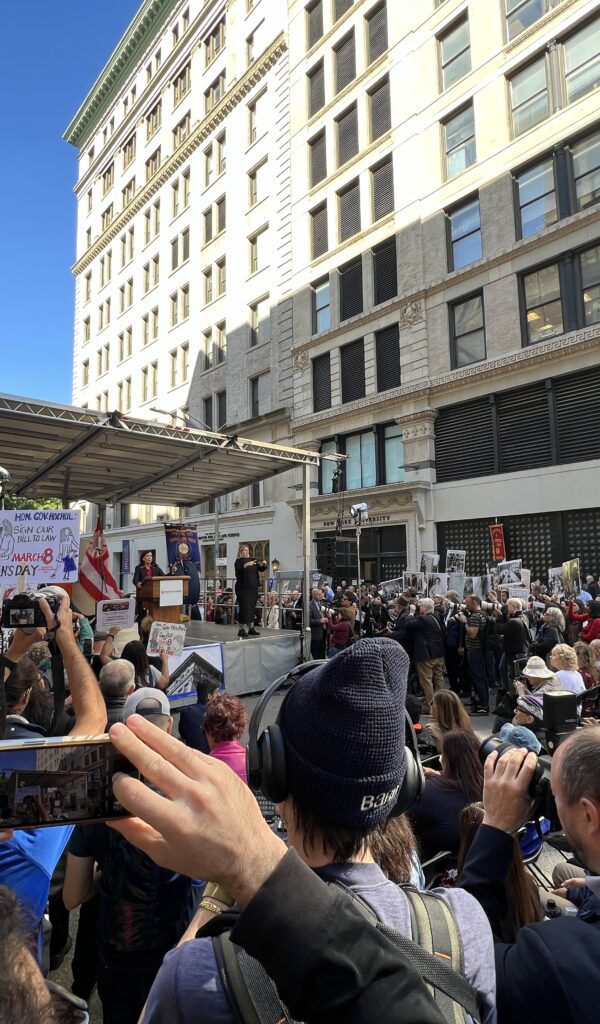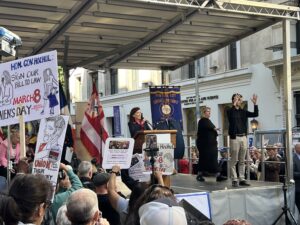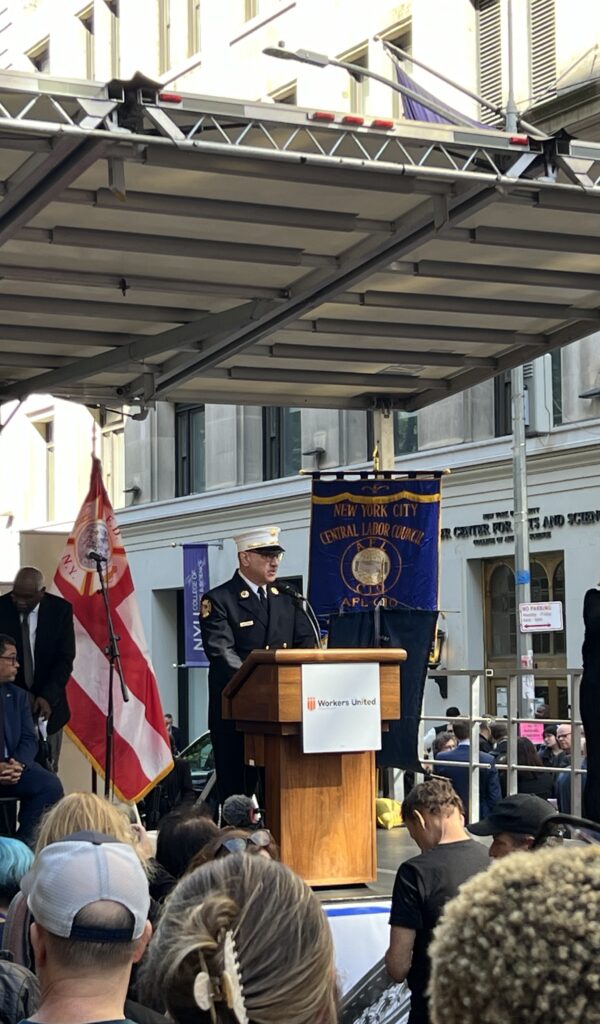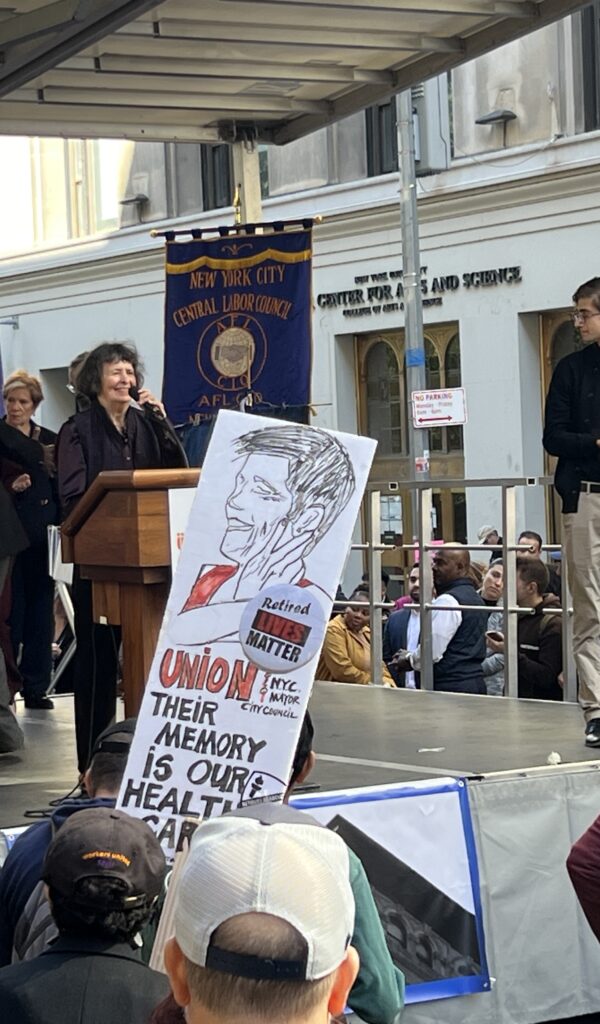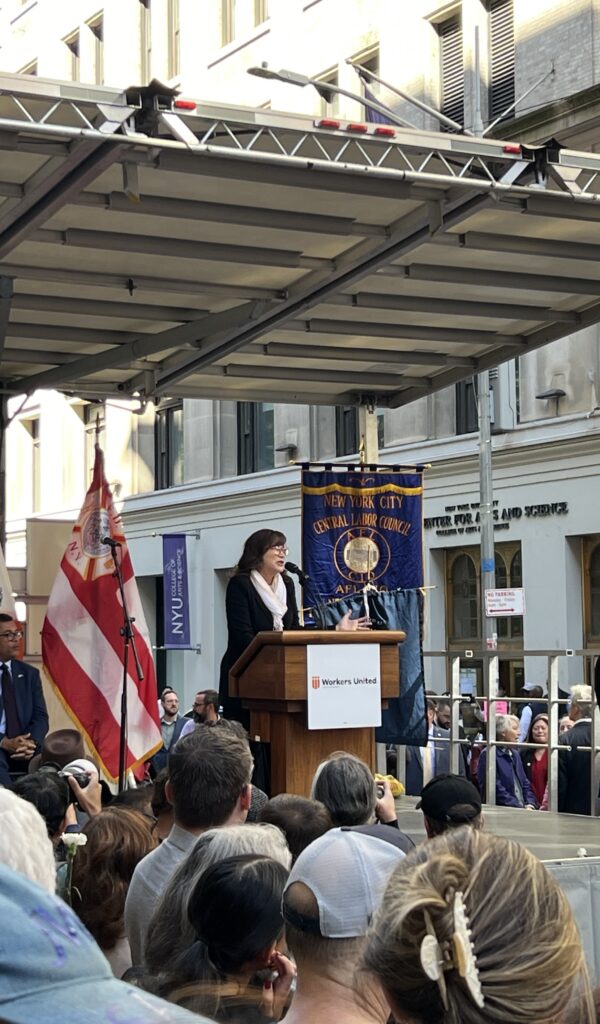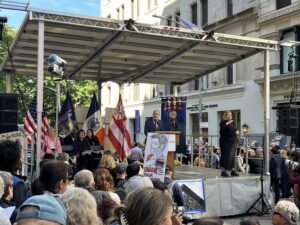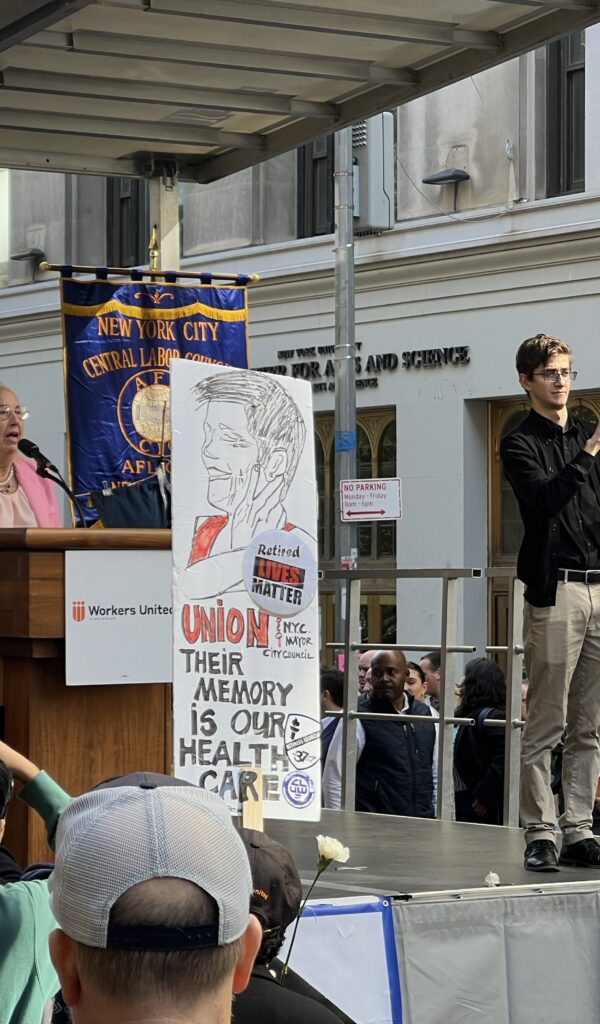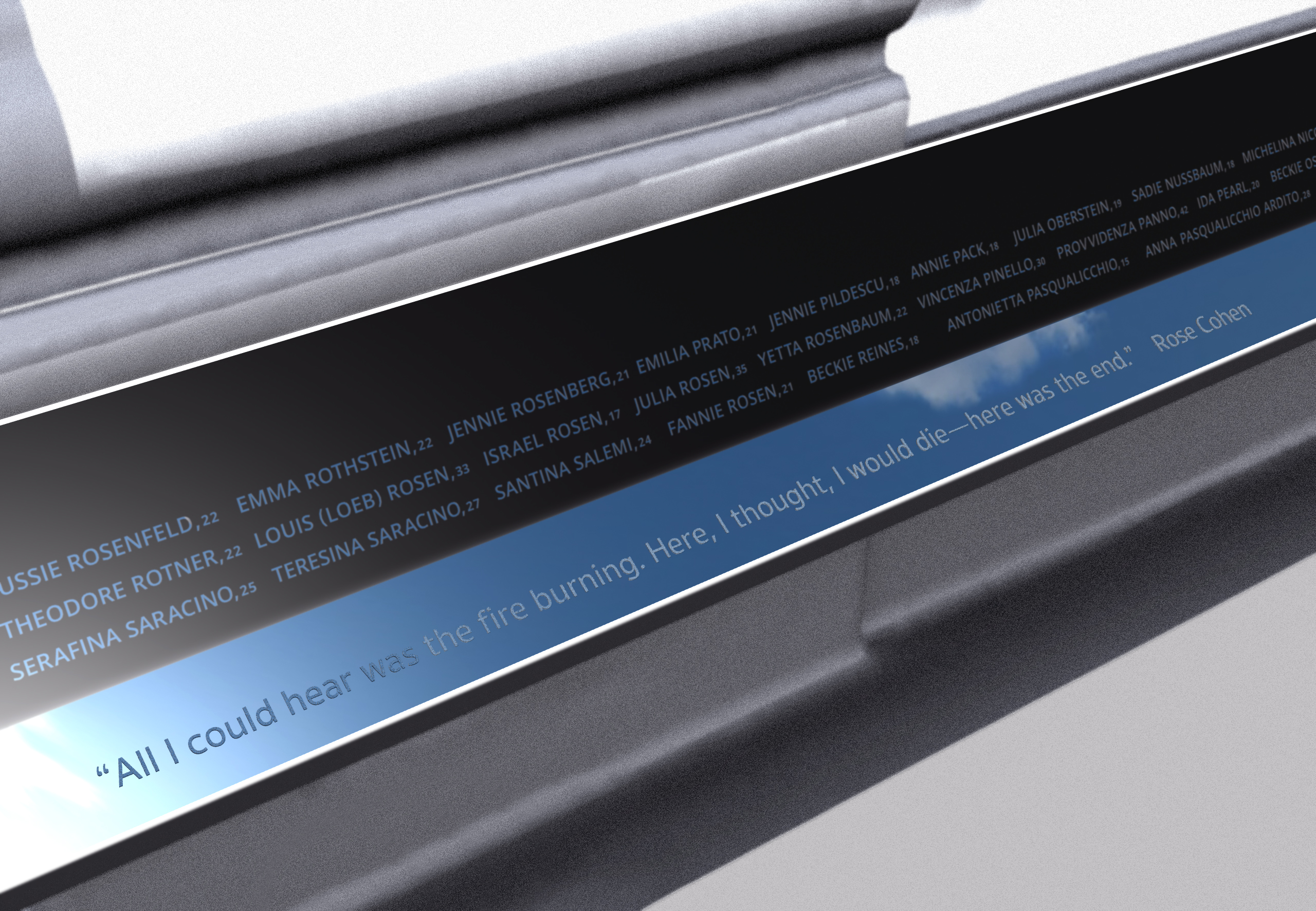
The Brown Building: Where A Tragic Fire Became a Catalyst for Reform
October 12, 2023
On March 25th, 1911, The Brown Building (originally Asch Building) was the site of one of the worst industrial disasters in American history. On that date, a fire broke out in the Triangle Shirtwaist Factory on the top three floors of the building, resulting in the tragic loss of 146 workers, most of them young women.
In light of the Remember the Triangle Fire Coalition’s installation of a permanent memorial to the victims of the fire, the Puffin Foundation examines the history of the iconic building which stands not only as a reminder of a terrible tragedy but also of the social reform it inspired.

Financing, Design, and Construction
The Brown Building, today a part of New York University’s campus, was built in 1900-01 for investor Joseph J. Asch, in partnership with developer Ole Olsen. Designed by the architect John Woolley in the Neo-Renaissance style, the building was to be a modern loft structure, featuring a frame made of iron and steel, protected by terra-cotta fireproofing, electric power, as well as passenger and freight elevators.
Despite these modern amenities, Woolley’s plans resulted in an objection sheet from the Buildings Department, stating that the building was required to have an additional stairway and that the fire escape “must lead to something more substantial than a skylight.” Ultimately, Woolley agreed to correct the objections, but requested exemption to the additional stairway, which was granted. Eventually, Woolley was dismissed and the project was turned over to the firm of Robert Maynicke. Construction was completed in January 1901.
The Triangle Waist Company
In August 1901, Max Blanck and Isaac Harris, the “Shirtwaist Kings” who established the Triangle Waist Company, signed a thirty month lease for the eighth floor of the Asch Building, taking over the ninth and tenth floors over the next few years. Blanck and Harris were considered by their workers to be among the worst employers in the industry. They were heedless of the safety and fire hazards of their factory, ignored labor laws, and locked doors to ensure their workers would not leave the building.
The Triangle Fire

On March 25, 1911, at 4:45 pm, a fire erupted on the eighth floor of the building, originating in one of the scrap piles stored underneath the cutting tables. Although several workers attempted to extinguish the fire with buckets of water, it was not enough to control the flames that soon engulfed the entire room. Thankfully, many of the workers on the eighth floor managed to escape, but a few who could not reach the fire stairs jumped out of windows to their deaths. Few escaped the ninth and tenth floors. Some who attempted to escape found doorways locked, others, who managed to climb on to a rickety fire escape without a drop ladder, were killed after it collapsed. Ultimately, one hundred-forty-six factory workers either died in the blaze or succumbed to their injuries days later.
The Aftermath

The tragedy of the Triangle Factory stunned the nation. Prayer services were held throughout the city, and on April 5, 80,000 mourners marched on Fifth Avenue in a funeral procession for the unidentifiable and unclaimed victims of the fire. The Ladies Waist and Dressmakers Union Local 25 raised money to support the families of the victims, and by 1913, 60,000 women in New York State had achieved better pay, improved sanitary conditions, and shortened work weeks through union striking. The Women’s Trade Union League lobbied agency heads to increase legislation to remedy the conditions which led to the disaster, and in 1911, the New York City Board of Aldermen adopted the Sullivan-Hoey Act which established the Bureau of Fire Prevention.
After the fire, Joseph Asch had Maynicke & Franke correct several defects which contributed to the disaster, including making the roof accessible via the Washington Place staircase, removing iron shutters from windows, installing a sprinkler system and constructing water tanks on the roof. It was renamed the Greenwich building and continued to be used for manufacturing, with stores on the first floor.
Post-fire years and New York University
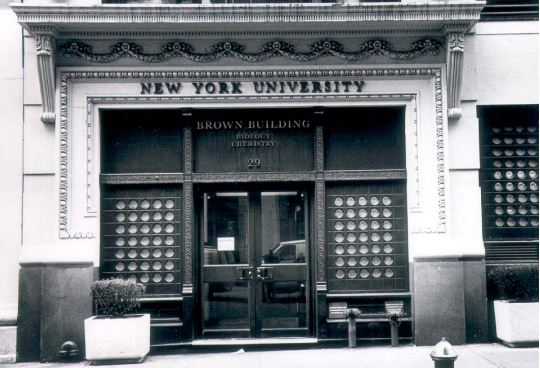
Photo: Carl Forster
By the end of 1915, New York University rented the eighth floor and by 1926 had occupied all of its floors. On February 28, 1929, Frederick Brown, a German-born real estate redeveloper purchased the site from Bleecker-Washington properties who had owned it since 1920. On that same day, he and his wife signed over the building to NYU, a gift which would save the university $92,000 dollars a year in rent. After being renamed the Brown Building in recognition of its donor, it was used for NYU classrooms and laboratories. Today, it continues to house the university’s biology and chemistry departments.
The Triangle Fire Memorial
In 2012, the Remember the Triangle Fire Coalition held an international competition to design a permanent memorial dedicated to the victims of the Triangle factory fire on the site of the tragedy, the Brown Building in New York City. The design, proposed by Joon Yoo and Uri Wegman, was selected from nearly 180 submissions.

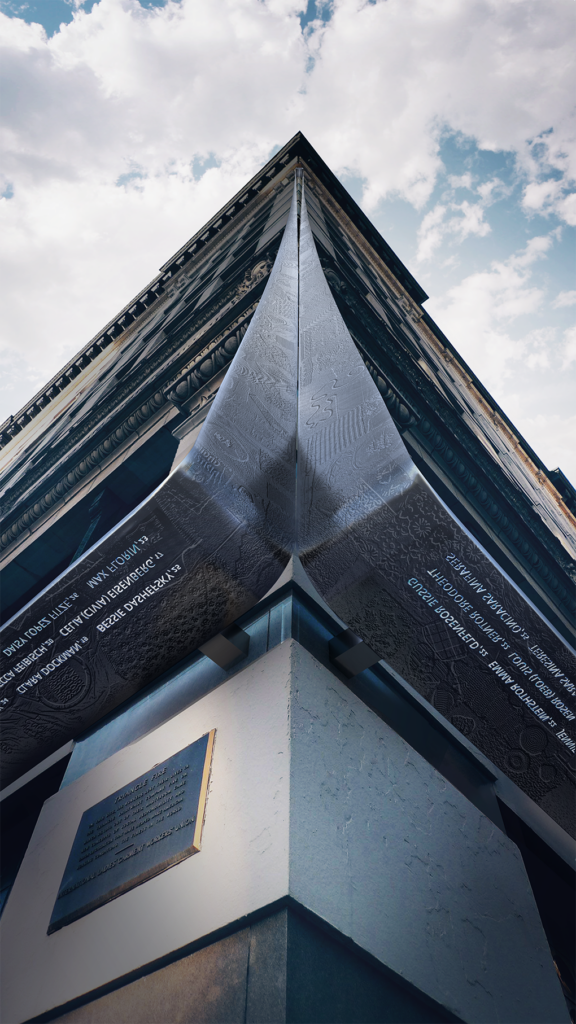
The main body of the memorial is a stainless steel textured ribbon which descends from the ninth floor of the building, splitting at the top of the ground floor to flank the building’s facades. The names of the victims are cut into the ribbon and reflected in a darkened reflecting panel on the street level.
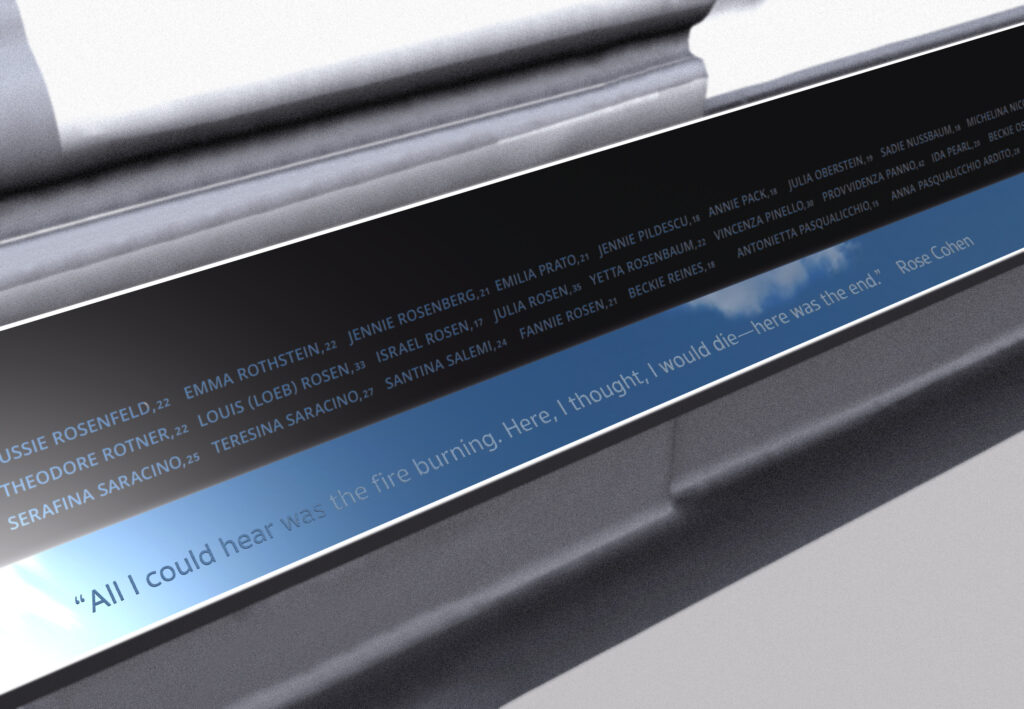
The Triangle Fire Memorial, a project supported by The Puffin Foundation, was dedicated on October 11, 2023 at the Brown Building, at the corner of Greene Street and Washington Place in Greenwich Village. The public ceremony featured remarks by elected officials, labor leaders, FDNY representatives, as well as family members of the fire’s victims and other members of the Remember the Triangle Fire Coalition. Musical entertainment was provided by the New York City Labor Chorus and Jameel McKanstry.
Below are photos from the event. You can also watch the livestream on YouTube.

